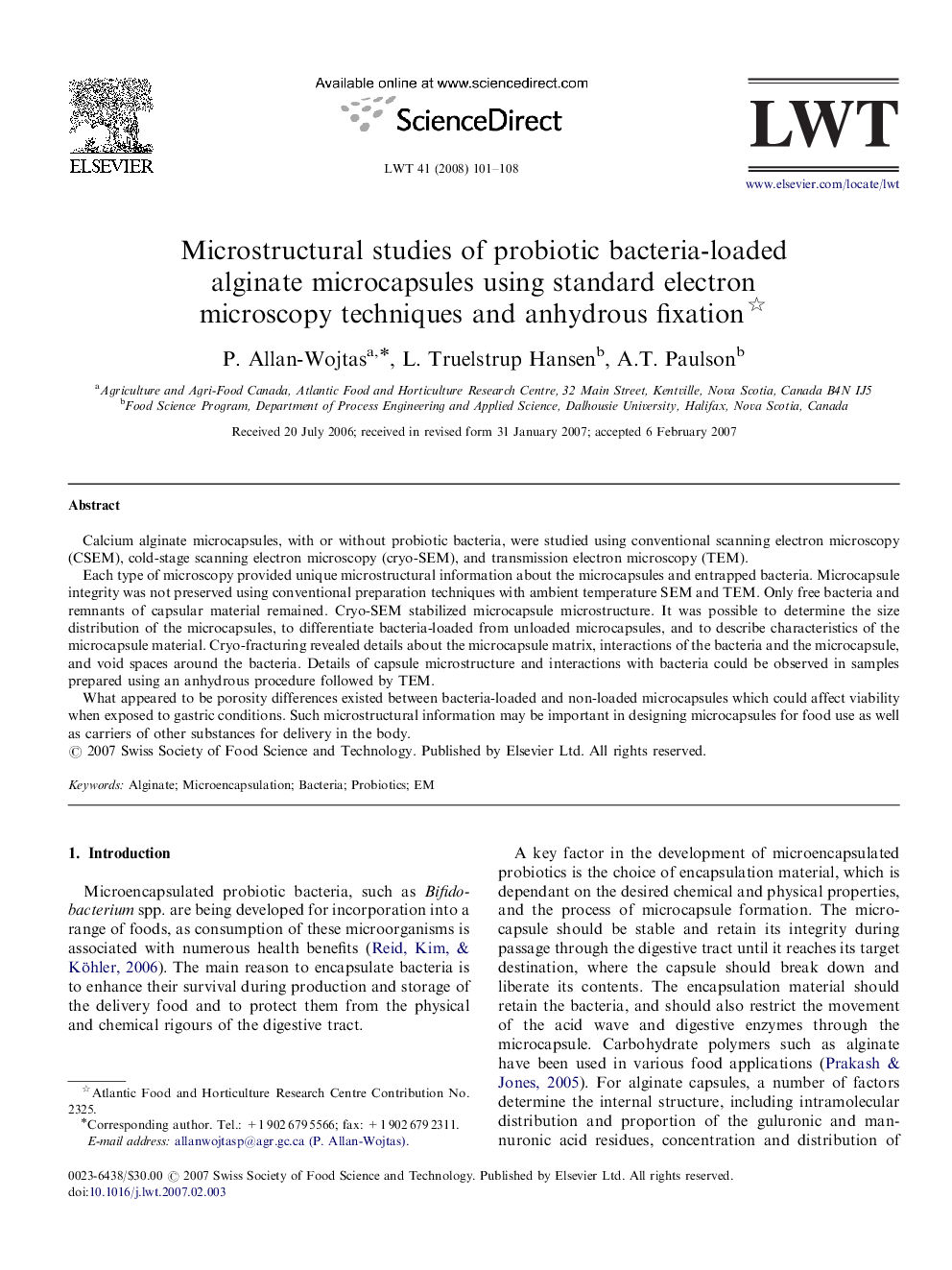| Article ID | Journal | Published Year | Pages | File Type |
|---|---|---|---|---|
| 4565087 | LWT - Food Science and Technology | 2008 | 8 Pages |
Calcium alginate microcapsules, with or without probiotic bacteria, were studied using conventional scanning electron microscopy (CSEM), cold-stage scanning electron microscopy (cryo-SEM), and transmission electron microscopy (TEM).Each type of microscopy provided unique microstructural information about the microcapsules and entrapped bacteria. Microcapsule integrity was not preserved using conventional preparation techniques with ambient temperature SEM and TEM. Only free bacteria and remnants of capsular material remained. Cryo-SEM stabilized microcapsule microstructure. It was possible to determine the size distribution of the microcapsules, to differentiate bacteria-loaded from unloaded microcapsules, and to describe characteristics of the microcapsule material. Cryo-fracturing revealed details about the microcapsule matrix, interactions of the bacteria and the microcapsule, and void spaces around the bacteria. Details of capsule microstructure and interactions with bacteria could be observed in samples prepared using an anhydrous procedure followed by TEM.What appeared to be porosity differences existed between bacteria-loaded and non-loaded microcapsules which could affect viability when exposed to gastric conditions. Such microstructural information may be important in designing microcapsules for food use as well as carriers of other substances for delivery in the body.
